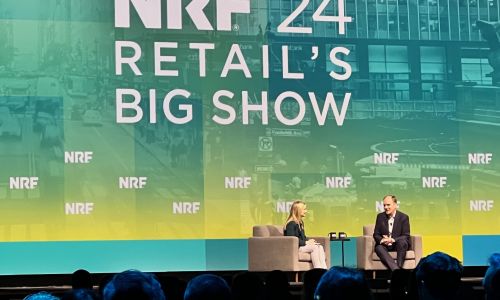Do You Like Scary Movies?
Journey mapping from the bottom to the top, and vice versa, leads to interesting insights.

A recent Forrester analysis of customer journey-mapping tools, released earlier this year, analyzed 13 different vendors, examining each one in terms of:
• Data fusion—how well a vendor can “connect the dots” with respect to different journey steps
• Design and planning—which includes creating a repository of journey-maps to analyze current and future behaviors and track interactions
• Testing and optimization—the ability to experiment with various hypotheses, measure the results, and optimize future journeys
• Automation and orchestration—which requires predictive and prescriptive analytics to enable automation of future interactions.
What I found the most interesting about their analysis, was the way Forrester categorized the journey-map vendors into two groups, based on how they create their journey maps. They were either Bottom-Up or Top-Down.
Bottom-up journey mapping
Ten of the vendors were identified as bottom-up journey mappers, because their maps come directly from the streams of transactional and other data generated by customers. With enough contact center, website, voice-of-the-customer (VOC) and CRM data, you can map out different kinds of journeys for different types of customers and situations. But the data-driven approach is based on inductive reasoning, which requires starting with details and hypothesizing general principles from those details.
This kind of “brute force analytics” is well suited for data-rich environments, but it has a very big drawback. Let me illustrate with a question: Do you like scary movies?
According to online dating site OK Cupid’s matchmaking database, when it comes to forecasting relationship longevity, “Do you like scary movies?” is the single most predictive question! But no one knows why, and the data won’t tell you. The data will tell you what, but it can’t always explain why.
And this can be a problem for the bottom-up, inductive approach to journey mapping.
Top-down journey mapping
The other three vendors were classified as top-down journey mappers, meaning that their mapping process is based on deductive, rather than inductive, reasoning. Deductive reasoning involves a kind of “meta” thinking process—that is, it starts with general principles and deduces specific facts and details from these general principles. Think of deductive reasoning as a kind of story-telling, disciplined by data and judgment.
But this top-down approach has its own pitfalls, because it starts with a reasoner’s out-of-the-blue “judgment,” and the quality of that judgment will vary from person to person, based on each one’s level of expertise, prior experience, and general familiarity with the field.
If your full-time job is unrelated to how customers experience the brand—say, you work in HR, or maybe logistics—then the quality of your judgment when it comes to customer journey mapping probably won’t be as high as the quality of judgment shown by, say, a digital marketing analyst, or a customer-facing worker. Not that you won’t have interesting and useful ideas, but top-down journey mapping requires an informed and experienced approach to be effective.
Both inductive and deductive reasoning are important if you really want to understand your customers with any confidence, but either form of analysis, when used by itself, will have flaws.
And the Forrester report says as much, cautioning that journey-mapping is not a tool, but a practice. To be done professionally, it should be thought of as both science and art.
* Don Peppers can be reached at dpeppers@cxspeakers.com.





